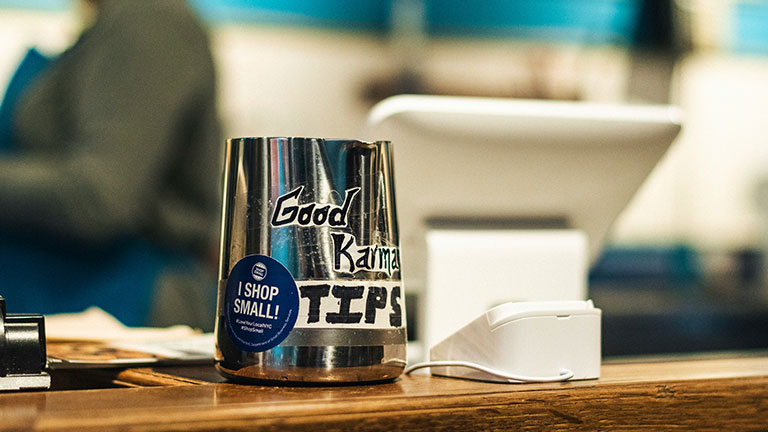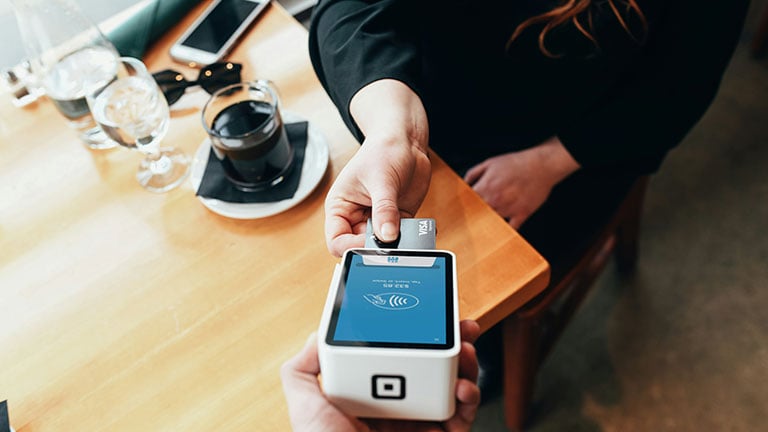
If you're confused about who and how much to tip for everyday services, you're not alone. In fact, a Pew Research Center study found that two-thirds of Americans feel puzzled when it comes to tipping.
With tipping rules constantly evolving, it’s hard to keep track of what’s appropriate and what’s not. And with more and more unexpected tip screens popping up at checkout, the confusion only grows.
To help take the guesswork out of tipping etiquette, here are some guidelines to tipping for everyday services.

Why do we tip?
Figuring out how much to tip for everyday services starts with understanding why we tip in the first place. It’s not just about showing appreciation; it also plays a big role in how some workers make a living.
In the US, the minimum wage for tipped workers is much lower than for other workers. Currently, the federal minimum wage for tipped workers is just $2.13 per hour, while most other workers must be paid at least $7.25 per hour.
Employers are supposed to make sure tipped workers—most commonly, waitstaff at restaurants and bartenders—earn enough in wages and tips combined to meet the minimum wage. But every state has its own rules, so how much a worker makes can depend on where they live. Some workers earn a higher hourly wage, while others rely mostly on tips to pay their bills.
This means that for many workers, tips are a key part of their income. That’s one reason tipping expectations can feel all over the place as well as why people have different ideas about what’s fair.

Why does it feel like we’re tipping everywhere now?
Tip screens on digital kiosks at checkout are becoming more common—and there’s a reason for it. Since the pandemic, businesses have increasingly adopted contactless payment systems, and with rising costs and labor shortages, many have turned to tipping as a way to supplement workers’ wages.
Otherwise known as “tipflation” or “tip creep,” this trend has made tipping more common in places where it wasn’t expected before—such as self-checkouts, coffee shops, and retail stores. While tipping is ultimately up to your discretion, digital tip prompts can leave you feeling pressured.
Although technology is changing how we tip, it’s important to remember that tipping should be about showing appreciation, not about feeling obligated.

What should you consider when tipping?
When it comes to tipping etiquette, everyone has their own ideas on what's appropriate. While people have different views on tipping, quality of service is the biggest factor for many Americans.
Other key factors that can help you determine how much to tip include the following:
- The worker’s wages
- What you can comfortably afford to tip
- Tipping customs based on your location
- The type of service provided
Ultimately, tipping is a personal decision, and understanding these factors can help you make an informed choice, showing appreciation without feeling pressured.

How much should you be tipping?
Here are some basic guidelines for how much to tip, as originally published by the Emily Post Institute.
Restaurants:
15 to 20 percent of the bill for good service
Takeout orders:
10 to 15 percent is a nice gesture, especially for large or complex orders.
Baristas and bartenders:
$1 to $2 per drink or round up to show appreciation, especially if you frequent that location
Rideshare and taxi services:
15 to 20 percent—or more if they put in extra effort such as helping with your bags
Housekeeping:
$2 to $5 per night for hotel housekeeping, especially if you’re staying multiple days
Valet:
$2 to $5 each time they park and return your car
Bellhop:
$1 to $2 per bag when they help with your luggage
Hairstylists, barbers, and beauty professionals:
15 to 20 percent is standard.

When should you tip more?
There are some situations when it makes sense to tip a little more than you usually would, such as in the following scenarios:
When someone goes above and beyond: If your barber, hairstylist, or any other service provider puts in extra effort, a bigger tip is a great way to say thanks.
When you want to build a good relationship: If you see someone frequently—such as a doorman, valet, barista, or concierge—tipping a little more can help create goodwill and build rapport.
When there’s something to celebrate: Perhaps your barista mentions it’s her birthday or your barber just became a parent. The holiday season is also a great time to tip a little extra and spread some cheer.
While there are general tipping guidelines, remember that how much you tip is ultimately up to you. Sometimes you may receive exceptional service and feel inclined to tip more. Other times, you may not feel like tipping as much due to subpar service—and that’s okay, too.
Also keep in mind that tipping customs may vary by country. If you’re traveling abroad, check local tipping guidelines before your trip so that you know what to expect.

